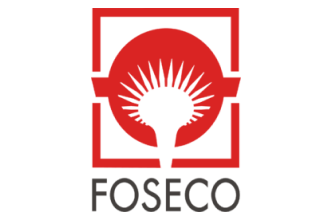Written by Michelle Whitmer | Edited By Walter Pacheco | Last Update: July 10, 2024
Foseco’s History with Asbestos
Foseco, which stands for “Foundry Service Company,” was founded in 1932 by Eric Weiss.
Foseco’s primary business is manufacturing products and providing services and support to the foundry industry. Its products are used in foundry melting shops, core shops and the molding line and pouring stages.
Foseco makes furnace brick linings, flow control products, crucibles for use with molten metals, and temperature measurement systems. All of these products require heat resistance, which is why the company used asbestos in them.
Two of Foseco’s subsidiaries — Foseco Canada Ltd. and Foseco Minsep Inc. — were listed among two dozen asbestos fiber customers of the North American Asbestos Corporation.
The company ignored warnings about asbestos health hazards and chose not to inform workers of the risk of developing mesothelioma or lung cancer. A 1964 letter sent by North American Asbestos Corporation’s scientific advisor to Foseco’s purchasing agent said that asbestos exposure increased the risk of lung cancer. However, Foseco continued to use asbestos.
The company’s Cleveland plant installed vacuums to collect the dust from asbestos products only after violating health guidelines for air quality passed by Congress in 1970.
By 1972, Armco Steel, Bethlehem Steel and Republic Steel in Pennsylvania, three of Foseco’s largest customers, expressed concern about the asbestos exposure levels.
Foseco’s response was to misinform customers that the asbestos in their products did not rise to a hazardous level. Under pressure from customers and their insurers, Foseco finally agreed to stop using asbestos in 1976.
Unlike many other asbestos manufacturers, Foseco never declared bankruptcy and does not have a trust fund. Instead, it continues to handle asbestos lawsuits through settlements and jury trials.
In April 2008, Vesuvius acquired Foseco to round out its foundry business division. Vesuvius develops products and solutions in the molten metal, glass and renewable energy industries.

Gain access to trust funds, grants and other forms of compensation for you or your loved ones.
Get Help NowAsbestos Litigation Involving Foseco
Foseco is among a number of companies involved in asbestos litigation as a defendant. Foseco was named in more than 5,000 asbestos lawsuits suits in Ohio’s Cuyahoga County Common Pleas Court alone.
Most claimants in the lawsuits against Foseco came from former employees and their surviving family members. At least eight former employees have died from mesothelioma, asbestosis or asbestos-related lung cancer. Foseco has paid more than $13 million in settlements to survivors.
- In April 2017, a Utah jury awarded $1.52 million to the estate of a family who lost their loved one to mesothelioma. The family had filed a wrongful death lawsuit against Foseco and other asbestos manufacturers.
- In August 2013, a California jury awarded $38.9 million in a wrongful death suit to the estate of Secundino Medina. Medina died of mesothelioma as a result of working with asbestos products made by Foseco and other manufacturers, including BorgWarner and Ford Motors.
Foseco’s Asbestos Products
Foseco’s asbestos-containing products included:
- Core coatings
- Die castings
- Exothermic riser sleeves (Kalminex brand)
- Ferrux hot topping compound
- Furnace linings
- Hot top insulation
- Kalminex boards
- Ladle liners
- Molding sand
- Permanent mold coatings
- Profax boards
- Proflex boards
Foseco used 18 million pounds of asbestos between 1961 and 1976 at its Cleveland manufacturing plant. The asbestos arrived in 120-pound burlap sacks from South Africa.
The bags were emptied into stirring machines that mixed asbestos, water, silica flour, resins and old newspapers. The slurry was used as a coating material for casting cores. Cores are used to create hollow castings such as those found inside an engine block.
A patent filed by Foseco in 1968 details the composition of exothermic hot tops. These hot tops were used to line the inner surface of mold metal castings. This dangerous mixture was made up of 4.9 percent amosite and 4.2 percent chrysotile asbestos.
Foundry workers involved in the production of these hot tops and other asbestos products were regularly exposed to dangerous amounts of asbestos fibers.
Foseco’s Occupations at Risk
The following occupations were at risk of exposure to Foseco’s asbestos products:
- Foseco manufacturing plant workers
- Foundry workers
- Steel mill workers
- Metal workers
- Industrial workers
- Boiler workers
- Furnace workers
Foundry workers pour molten metal into a mold to make a casting. Not only was asbestos mixed in stirring machines, foundry workers often wore protective clothing made of asbestos because of its resistance to heat and fire.
Foseco’s asbestos products were used in steel mills and other industrial jobsites, which resulted in exposure of metal workers, industrial workers and other occupations such as boiler workers.
A 2022 report by the European Commission noted that in 2019 alone, over 70,000 workers died from past exposure to asbestos.
Metal workers and steel mill workers, for example, were exposed to asbestos in Foseco’s hot top insulation and coating while cleaning asbestos dust out of hot tops, which are the lids of foundry molds.
Because Foseco also produced furnace brick linings, homeowners with furnaces and workers who maintain them are also at risk.
This Page Contains 7 Cited Articles
The sources on all content featured in The Mesothelioma Center at Asbestos.com include medical and scientific studies, peer-reviewed studies and other research documents from reputable organizations.
- European Commission. (2022, September 28). Questions and Answers: Towards an asbestos-free future. Retrieved from https://ec.europa.eu/commission/presscorner/detail/en/qanda_22_5678
- Vesuvius. (2020). History. Retrieved from https://www.vesuvius.com/en/about-us/history.html
- Vesuvius. (2020). Foseco. Retrieved from https://www.vesuvius.com/en/our-solutions/international/foundry.html
- Verdict Search. (2013, August 14). Estate of Secundino Medina v. A Best Products Company et al. Retrieved from https://verdictsearch.com/verdict/failure-to-warn-of-asbestos-content-resulted-in-death-suit/
- Smith, G. (2007, October 11). Cookson agrees £497m Foseco deal. Retrieved from https://www.ft.com/content/b450e060-77c3-11dc-8e4c-0000779fd2ac
- Foseco. (2006, September 14). Interim financial report of the six months ended 30 June 2006. Retrieved from http://www.steelonthenet.com/files/foseco_interim_results_14-Sep-06.pdf
- LinkedIn. (n.d.). Foseco. Retrieved from https://www.linkedin.com/company/foseco/








